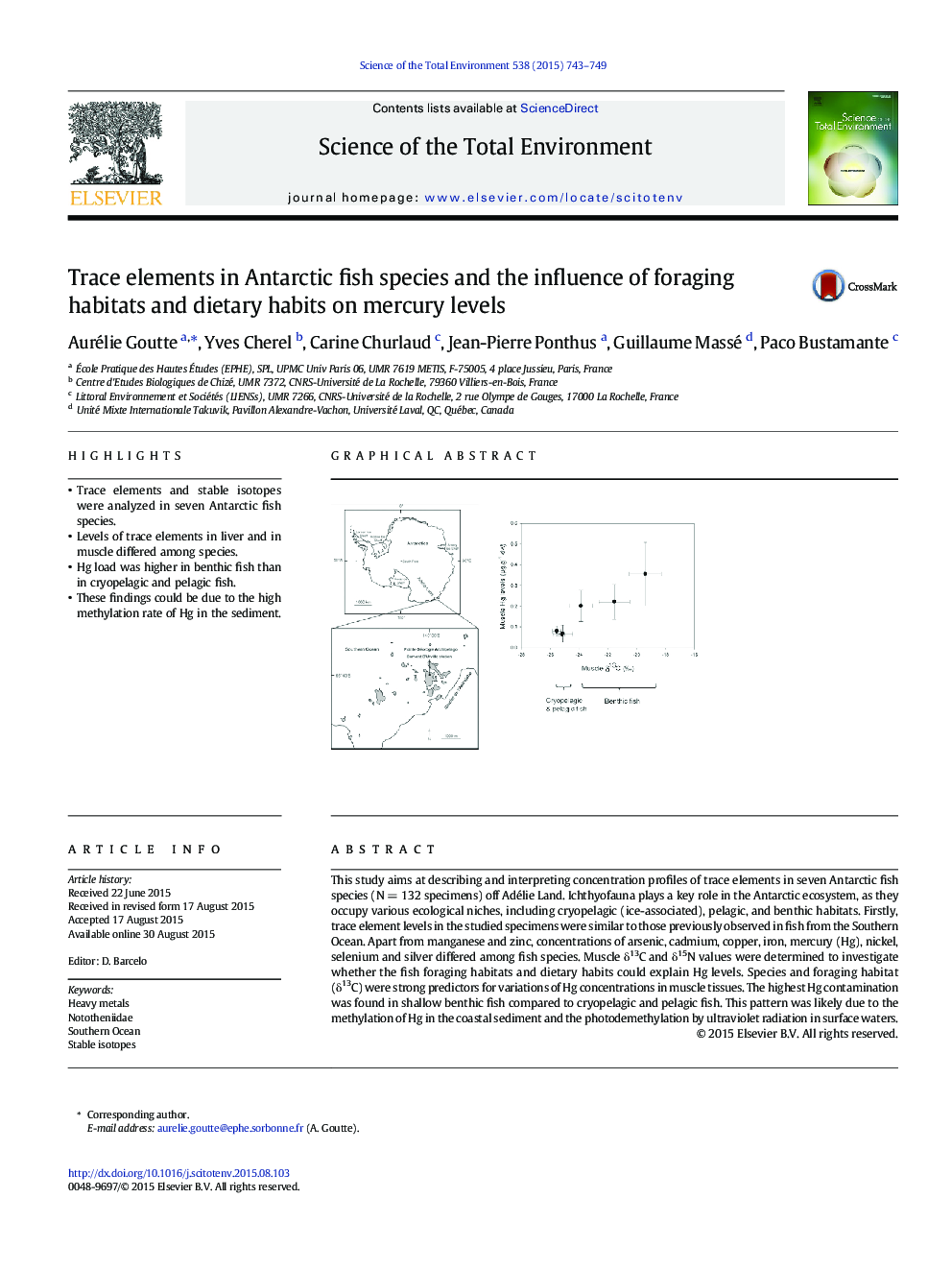| کد مقاله | کد نشریه | سال انتشار | مقاله انگلیسی | نسخه تمام متن |
|---|---|---|---|---|
| 6325361 | 1619746 | 2015 | 7 صفحه PDF | دانلود رایگان |
- Trace elements and stable isotopes were analyzed in seven Antarctic fish species.
- Levels of trace elements in liver and in muscle differed among species.
- Hg load was higher in benthic fish than in cryopelagic and pelagic fish.
- These findings could be due to the high methylation rate of Hg in the sediment.
This study aims at describing and interpreting concentration profiles of trace elements in seven Antarctic fish species (N = 132 specimens) off Adélie Land. Ichthyofauna plays a key role in the Antarctic ecosystem, as they occupy various ecological niches, including cryopelagic (ice-associated), pelagic, and benthic habitats. Firstly, trace element levels in the studied specimens were similar to those previously observed in fish from the Southern Ocean. Apart from manganese and zinc, concentrations of arsenic, cadmium, copper, iron, mercury (Hg), nickel, selenium and silver differed among fish species. Muscle δ13C and δ15N values were determined to investigate whether the fish foraging habitats and dietary habits could explain Hg levels. Species and foraging habitat (δ13C) were strong predictors for variations of Hg concentrations in muscle tissues. The highest Hg contamination was found in shallow benthic fish compared to cryopelagic and pelagic fish. This pattern was likely due to the methylation of Hg in the coastal sediment and the photodemethylation by ultraviolet radiation in surface waters.
152
Journal: Science of The Total Environment - Volume 538, 15 December 2015, Pages 743-749
